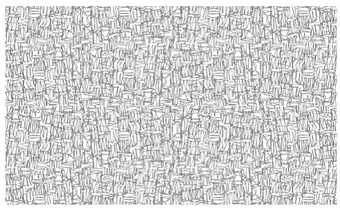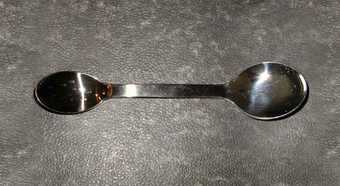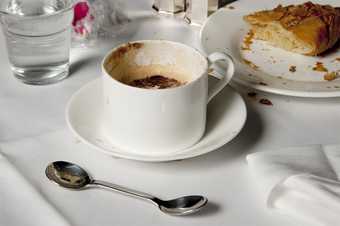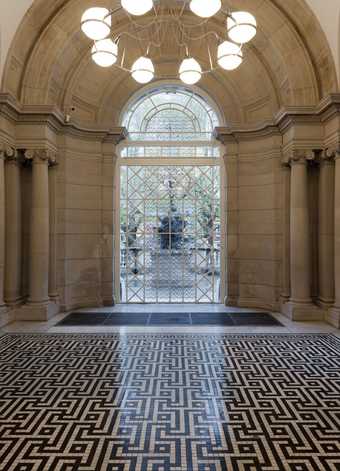Alan Johnston
Alan Johnston is an Edinburgh-based artist who is familiar with collaborating with architects. His large-scale, delicate drawings are made of short, irregular pencil marks which converge to delineate impressions of geometric spaces. At the same time, the pencil marks have a textural quality in that they are scratched into surfaces.
Working closely with Lend Lease, Johnston and his team of nine assistants created Tactile Geometry, a sweeping geometric artwork across the vaulted ceiling of the Djanogly Café. In conceiving Tactile Geometry, Johnston was compounding his previous work around the creation of shadow with a fundamental engagement with architectural form.
Johnston is interested in the ways in which spatial depth is experienced and marked out, and is mindful of the fact that this depends as much upon our perception of the voids between objects as our perception of objects themselves. He is keen that his work is explored bodily: “By walking around within it and by taking in observations from different angles and perspectives, body, vision and memory become intertwined.”
Alan Johnston’s commission was made possible with the generous support of The Woo Charitable Trust.
Nicole Wermers
20th century art has a strong connection with cafés and the associated bohemian culture and its rituals. The spoon, even as the smallest element of any cutlery set, is at the centre of that everyday ritual of preparing and drinking tea and coffee, a concept London-based German artist Nicole Wermers was keen to play with.
Manners, a double-fronted spoon in use alongside regular cutlery in the Djanogly Café, Members Room and Rex Whistler Restaurant, is characterised by two bowls which give a surreal element to the common character of a familiar tool, suggesting alchemical and magical associations that are in contrast to its modern design.
Manners is a deliberately subtle intervention which plays on the idea of “Kunst am Bau” ad absurdum and questions the nature of an artist commission in a museum’s café. Manners is almost invisible upon entering the spaces and yet most diners will come into physical contact with the work.
Richard Wright
The Millbank foyer was originally designed with a large symmetrical window at either end, glazed with small panes of various kinds of cast glass in an ornate floral iron frame. At some point between 1928 and 1960 the east window was removed and replaced with a banal timber frame glazed with panes of flat glass on a domestic scale, an asymmetry that served to weaken the room.
Richard Wright, winner of the 2009 Turner Prize, worked with Caruso St John to develop a design for cast glass components held in a lead matrix, like a fine line drawing. The leaded sections make a vertical banner within the window and the overall effect is one of complex shimmering.
Wright’s idea was executed by York Glaziers Trust, who normally conserve glass at York Minster. The window exemplifies some of the interests of the wider project – a restoration of an original architectural impetus, a contemporary sensibility for pattern and line, and methods of manufacture that are at turns ancient, precise and mesmerising. The glass itself was handmade in Redditch in the last such manufactory in Britain.






